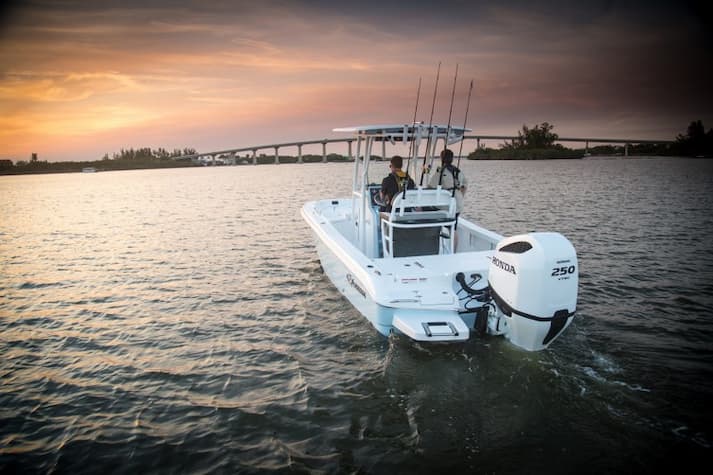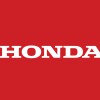Filter
Components of a Boat You Need to Know
Article
Components of a Boat You Need to Know
27 April 2023

Do you often engage in sea activities using a boat? If so, you need to know the different components of a boat, such as the outboard engine, cabin, and more. For example, as a fisherman who seeks fish in the sea using a boat, you can use an outboard engine to move your vessel.
Honda provides 4-stroke outboard engines with advanced technology and exclusive features that cannot be found elsewhere. In addition, Honda always strives to provide the latest innovation in every outboard engine to meet your various needs.
Knowing the different parts of a boat is crucial to understand so you can identify their uses and functions. If one part of the boat fails to function correctly, the vessel will not operate at its maximum capacity. So let us delve deeper into the boat parts and their functions below.
Read Also: Types of Boat Engines in Indonesia
Components of a Boat and Their Functions
A boat is composed of various essential components. That is why you need to know their functions to address any issues. For example, when your outboard engine has a problem, you can bring it to the nearest Honda dealer for immediate repair. Let us explore the different parts of a boat in detail below.
1. Stern
Sterns are found at the rear part of the boat. The control instrument of the boat is usually located in this area. Sterns consist of several parts, such as the elbow stern, spoon stern, and sloping stern.
2. Propeller
The propeller or the prop is a vital component of a boat that converts rotational motion into thrust that can move the vessel. Several types of propellers, such as azimuth thrusters, electrical pods, waterjets, Voith Schneider propellers, tunnel thrusters, and conventional propellers, differ in shape and function.
For conventional propellers, the pitch is fixed, while azimuth thrusters are located at the top of the boat. Tunnel thrusters are suitable for ports, while waterjets can be used on boats with high speeds.
Voith Schneider propellers enable the boat to move in various directions without the help of a rudder. Therefore, choosing the correct propeller is crucial to ensure the boat moves efficiently and effectively. In addition, the right propeller can improve the vessel's performance and reduce fuel consumption.
Therefore, the appropriate propeller should be based on the boat's characteristics, such as speed, power requirements, and maneuverability. Then, when you choose the right propeller, the boat can move smoothly and safely in the waters.
3. Chimney
The chimney is a pipe-like structure that works as an exhaust pipe. This component is commonly found in boats, factories, houses, etc. For example, on a boat, the chimney is essential in directing the smoke produced from the boat's fuel combustion.
4. Hull
The hull is the outermost part of the boat. This part is made of steel, wood, or aluminium that is joined to form a strip on the boat's body and shaped like a plate. The hull has various essential functions, one of which is to be waterproof. The cabin of the boat will always be dry because of the hull.
5. Main Deck
This component is called a deck, which means the boat's floor. The main deck is usually above the boat, the bottom deck is below, and the tween deck is between the upper and lower decks. The deck is made of various materials, such as ivory, wood, fibreglass, and iron.
The deck must have various criteria, such as resistance to temperature changes, minimal water absorption, durability, and sufficient hardness. The deck planking can be made using wood materials like pine or teak wood.
6. Bridge
The bridge is a command room with various navigation equipment, the captain's quarters, and radio equipment. Information about the boat's position can be easily obtained thanks to the navigation equipment available on the bridge.
The bridge is also designed with a view in various directions to facilitate observation of the conditions around the boat. Therefore, the bridge must have various navigation and communication equipment, such as a compass, radar, engine control device, steering wheel, telescope, GPS, and radio equipment.
7. Hull
The boat's hull, also known as the hull, is a component of the boat's body that has buoyancy so that the boat does not sink. Therefore, the design of the boat's hull must minimize water friction, especially for high-speed boats.
The boat's hull has various exciting and different shapes, such as tunnel hulls, pontoon hulls, flat-bottomed hulls, catamaran hulls, and other hulls. The boat's hull is designed very carefully because it affects its durability and stability at sea.
8. Deckhouse
Another part of the boat is the deckhouse. This part facilitates activities on the deck, both when the boat is about to dock and when it is docked. In addition, this boat part can be used to store anchors and mooring equipment. The boat's crew also uses the deckhouse when the boat is about to dock at a port or wharf.
9. Keel
The boat's keel is located at the bottom of the boat and is divided into several types: vertical, hull, and bottom. The hull keel protects the boat from damage due to grounding, usually with a length of between one-quarter to one-third of the length of the boat's bottom.
Meanwhile, the bottom keel is a boat's lane with a thickness of about 35 per cent of the boat's skin. On the other hand, the vertical keel has a length that follows the boat's shape. All these types of keels are essential to ensure the stability and safety of the boat while sailing at sea.
10. Double Bottom
A collision bulkhead forms this part and has varying heights depending on the size of the boat. The double bottom is used as a storage area for oil, ballast, and fresh water. The double bottom can also improve the boat's longitudinal structural strength, make the boat's high points higher, and increase the boat's safety in leak situations.
11. Collision Bulkhead
The collision bulkhead separates rooms inside the boat and increases the boat's strength to withstand collisions. The collision bulkhead can also keep the boat sailing safely, even in the event of a leak.
Several things need to be considered, such as using the correct angle steel, determining the proper reinforcement limit, and ensuring that the bulkhead thickness exceeds the watertight bulkhead thickness. By paying attention to these things, the function of the collision bulkhead on the boat can be maximized.
The Function of Boat Components
A boat has various parts, each of which has a different function. While there are many parts to a boat, some important ones and their functions have been explained below.
The stern is the rear part of a boat that steers the boat in the direction you want it to go. Meanwhile, the propeller is located under the boat and is used to move the boat forward or backward.
The funnel channels exhaust gases from the boat's engine outside the boat. The hull is the outermost part of the boat that aims to protect the boat from damage or wear caused by seawater or the marine environment.
The main deck is where the crew works and performs activities such as lifting and moving cargo or fuel. Finally, the bridge is the boat's control centre, containing navigation instruments and communication equipment.
The boat's hull functions as a buoyancy tank that keeps the boat afloat. The cargo hold is the boat's storage space where cargo is stored and transferred. Finally, the keel is a structure that spans under the boat and aims to maintain the boat's strength and stability.
The double bottom is the bottom part of the boat equipped with two layers of iron plates, where the top layer can be removed and cleaned from sand, mud, and accumulated dirt. Meanwhile, the collision bulkhead serves to separate rooms inside the boat.
Read Also: 3 Parts of an Outboard Motor
For small-sized boats commonly used by fishermen to search for fish in the sea usually use an outboard engine when moving. The outboard engine functions to move the boat's propeller.
These boat parts, including the outboard engine, must function appropriately to be used optimally. You can choose an outboard engine according to your needs at Honda Power. Various outboard engines are equipped with advanced technology and maximum power. So, find the best and most reliable outboard engine at Honda Power Products according to your needs.

Honda Power Products Indonesia
Honda Power Products menyediakan mesin serbaguna, generator, pemotong rumput, pemotong sikat, pompa air, dan mesin tempel.
